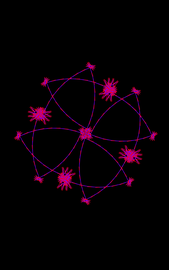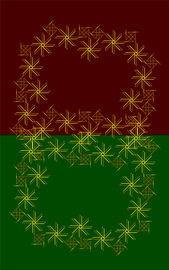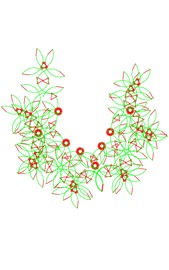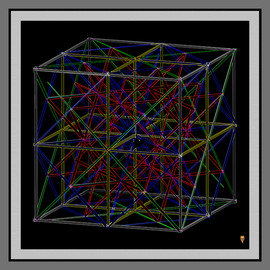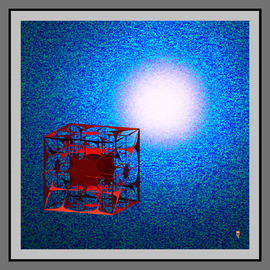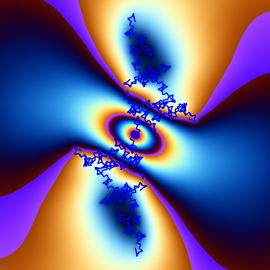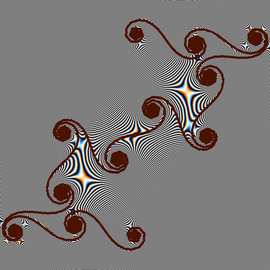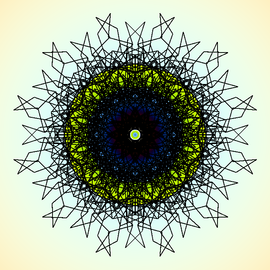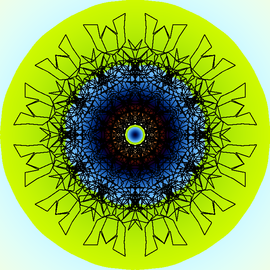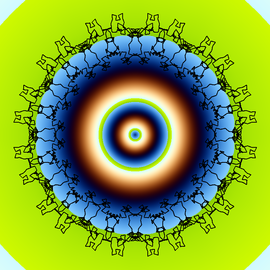Crystallographic point groups
Crystallography is the branch of science devoted to the study of crystalline structure. It has far-reaching applications in mineralogy, chemistry, physics, mathematics, biology and materials science (iucr.org).
A crystallographic points group is a group of symmetry operations all of which leave at least one point unmoved. The following are examples of crystallographic points group symmetries taken from a series of illustrations by the author.
The symmetries outines were created in a vector based graphic program, black and white shading and texture were added to give the lines a sense of weigh and distance. A variation of specific color schemes were assigned to each plate to bring the compositions together.

Isometric symmetry #1
Isometric symmetry taken from a series of illustrations by the author of the 32 crystallographic points group system. The outline of an isometric profile of three crystallographic axes of equal length and at right angles to each other has been transfered in a digital graphic environment to create this visualization.
Black and white shading and texture were added to give the lines a sense of weigh distance and a compound (split complementary) color scheme was selected to bring the composition together.

Isometric symmetry #2
Isometric symmetry taken from a series of illustrations by the author of the 32 crystallographic points group system. The outline of an isometric profile of three crystallographic axes of equal length and at right angles to each other has been transfered in a digital graphic environment to create this visualization.
Black and white shading and texture were added to give the lines a sense of weigh distance and a triadic color scheme was selected to bring the composition together.
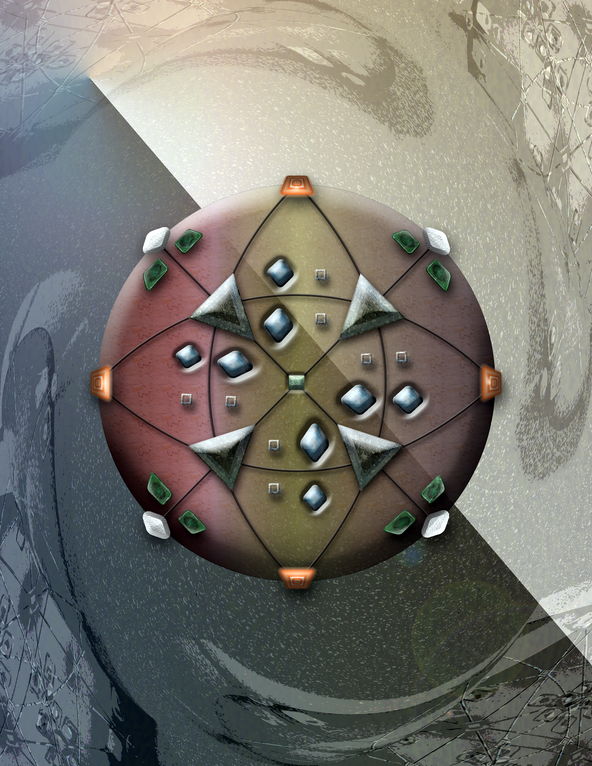
Isometric symmetry #1
Isometric symmetry taken from a series of illustrations by the author of the 32 crystallographic points group system. The outline of an isometric profile of three crystallographic axes of equal length and at right angles to each other has been transfered in a digital graphic environment to create this visualization.
Black and white shading and texture were added to give the lines a sense of weigh distance and a triadic color scheme was selected to bring the composition together.
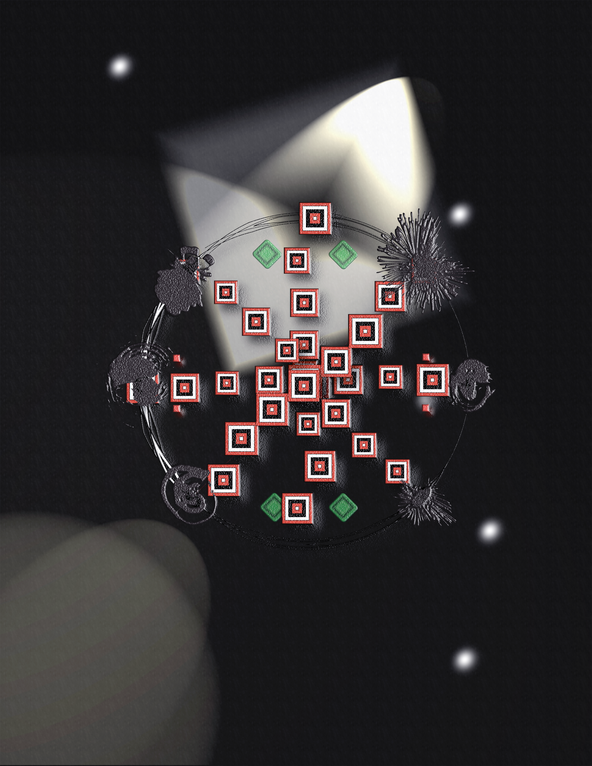
tetragonal symmetry #1
The tetragonal System symmetry is characterized by a single 4-fold or 4-fold rotoinversion axis. three mutually perpendicular axes. The two horizontal axes are of equal length, while the vertical axis is of different length and may be either shorter or longer than the other two.
The following is an example of an tetragonal symmetry taken from a series of illustrations by the author of the 32 crystallographic points group system. The outline of a tetragonal profile has been transfered in a digital graphic environment to create this visualization. Black and white shading and texture were added to give the lines a sense of weigh distance and a complementary color scheme was selected to bring the composition together.

Tetragonal symmetry #2
Crystallography is the branch of science devoted to the study of crystalline structure. It has far-reaching applications in mineralogy, chemistry, physics, mathematics, biology and materials science (iucr.org). A crystallographic point group is a group of symmetry operations all of which leave at least one point unmoved. The tetragonal System symmetry is characterized by a single 4-fold or 4-fold rotoinversion axis. three mutually perpendicular axes. The two horizontal axes are of equal length, while the vertical axis is of different length and may be either shorter or longer than the other two.
The following is an example of an tetragonal symmetry taken from a series of illustrations by the author of the 32 crystallographic points group system. The outline of a tetragonal profile has been transfered in a digital graphic environment to create this visualization. Black and white shading and texture were added to give the lines a sense of weigh distance and a complementary color scheme was selected to bring the composition together.

Tetragonal symmetry #3
The tetragonal system symmetry is characterized by a single 4-fold or 4-fold rotoinversion axis. three mutually perpendicular axes. The two horizontal axes are of equal length, while the vertical axis is of different length and may be either shorter or longer than the other two.
The following is an example of an tetragonal symmetry taken from a series of illustrations by the author of the 32 crystallographic points group system. The outline of a tetragonal profile has been transfered in a digital graphic environment to create this visualization. Black and white shading and texture were added to give the lines a sense of weigh distance and a compound (split complementary) color scheme was selected to bring the composition together.





